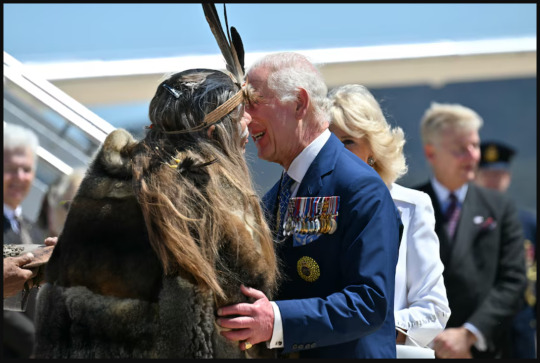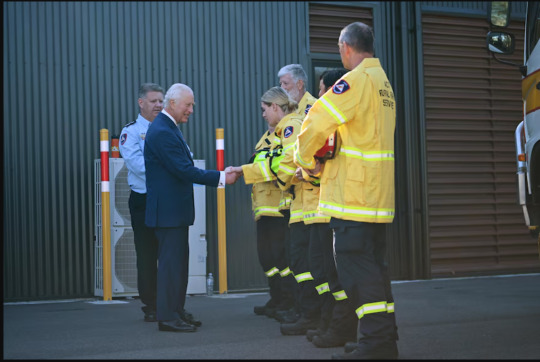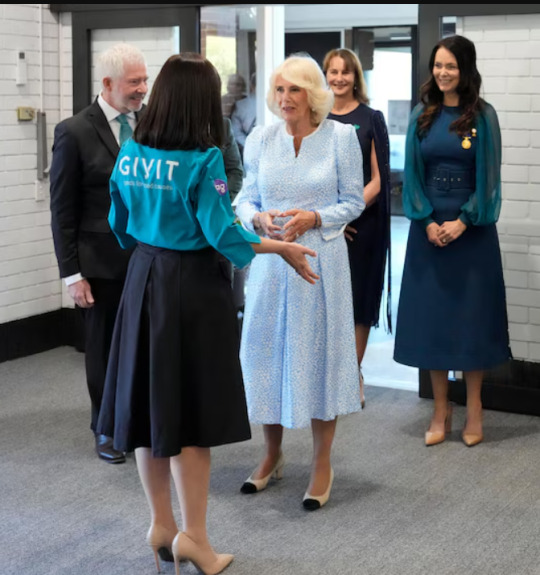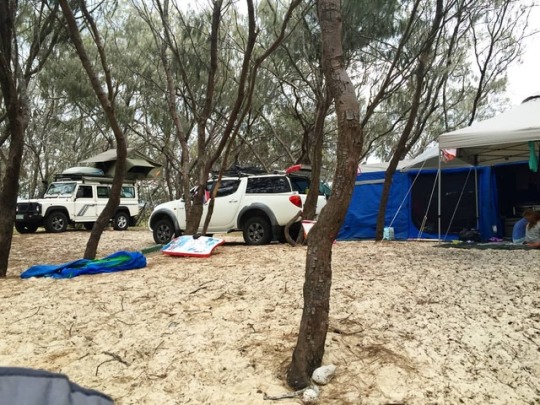#quandamooka
Explore tagged Tumblr posts
Text


So many shells. There used to be a lot of oyster harvesting back in the day. It's nice to see them back, though i dislike seafood I do like history.
#do whatever brings you joy#I say that but it's not like they're asking me to lick them#might still lick them#positivity#happy#little things#sydney opera house#whispers byMegan Cope#Quandamooka
0 notes
Text
How Quandamooka artist Megan Cope is recognising history | In Trend Today
How Quandamooka artist Megan Cope is recognising history Read Full Text or Full Article on MAG NEWS

View On WordPress
#Celebrities#How Quandamooka artist Megan Cope is recognising history#Money#Motors#Politics#ShowBiz#Sport#Tech#UK#US#World
0 notes
Text
How Quandamooka artist Megan Cope is recognising history | In Trend Today
How Quandamooka artist Megan Cope is recognising history Read Full Text or Full Article on MAG NEWS

View On WordPress
#Celebrities#How Quandamooka artist Megan Cope is recognising history#Money#Motors#Politics#ShowBiz#Sport#Tech#Trends#UK#US#World
0 notes
Text
Australian Tour
Monday the 21st of October
The King and Queen travelled to Canberra today.
Under a cut as this is long
The King and Queen arrived in Canberra at 11.45am.
There was a Welcome to Country ceremony and a Smoking Ceremony at Defence Establishment Fairbairn upon their arrival in Canberra. The King and Queen were greeted by Ngunnawal Elder Aunty Serena Williams.

The King and Queen went to the War Memorial, where they laid a wreath at the War Memorial and toured the separate For Our Country memorial for indigenous soldiers (I can't find any pictures of this last event). They were shown through the For Our Country memorial alongside Aunty Lorraine Hatton OAM, an Australian Army veteran and Quandamooka Elder of the Noonuccal and Ngughi tribes in Southeast Queensland.

They then greeted the public outside the War Memorial.
The next stop was Parliament House, where The King reviewed members of the ADF on his arrival and The King and Queen attended a reception which included another Welcome to Country ceremony by Ngunnawal elder Aunty Violet Sheridan. The King and Queen signed the visitor's book at Parliament House (and also at the War Memorial earlier). At the reception, the King and Queen met two Australians of the Year, Professor Georgina Long and Professor Richard Scolyer. At some time during their time at Government House they met members of the public in the forecourt.


The Queen left to change her outfit and attend a solo engagement, a round table discussion with domestic violence advocates at Government House, hosted by the Governor-General Ms Sam Moyston.

King Charles received the Prime Minister and Leader of the Opposition at Government House. During this time he signed the royal warrant for the use of The Great Deal of Australia by the Governor-General.

Later in the afternoon, The King and Queen planted a pair of snow gums at Government House in Canberra


The King then visited the CSIRO's National Bushfire Research Laboratory. The King watched a "Pyrotron" demonstration which replicates a bushfire in a 29-metre long combustion wind tunnel, and then saw a 'burn over drill' outside, where five volunteer firefighters of the ACT Rural Fire Service demonstrated how firefighters stuck in the truck in the middle of a firestorm would survive


The Queen visited the charity GIVIT in a room at the Australian Botanic Gardens.

The King and Queen then visited the National Botanic Gardens. The King undertook a special tour of the Banksia Garden by Beverly and Kain Ardler from the Wreck Bay Aboriginal Community. while The Queen met with schoolchildren learning about seed pods before re-joining the King. The King planted a tree and they both walked through the Rainforest Gully before returning to Sydney.

It was a full day of events for both of them.
I am not mentioned the protestors, especially one very rude and disrespectful protestor (described as a "one-off idiot" by the indigenous elder who did the Welcome to Country ceremony at the reception at Government House, and her act was described as 'political exhibitionism' by a former Prime Minister), as they are not worth my time or attention.
36 notes
·
View notes
Text
youtube
Jerry has lots of dollar-stretching ideas for saving money in the garden.
1. Free plants:
Saving seed can be a life-changing experience. You can easily save lots of seed, giving you lots of opportunity to experiment without fear of failure, as well as the option of giving some away. Store in airtight containers such as old jars; save silica gel to go with the seeds to keep the seeds dry in storage.
To collect seed, use old panty hose to slip over the ends of plants with pods that explode - as some pea plants and brassicas.
You can also propagate by cuttings. Jerry prunes plants at a good time to take cuttings - usually after they’ve finished flowering. Jerry also uses recycled pots and potting mix, making it even cheaper.
2. Free fuel:
Animal manure is great and often freely available - Jerry managed to source some camel and buffalo dung when a circus recently came to town!
Always compost manure first, to remove any weed seed or residual chemicals they may be carrying.
Jerry also recycles any dead cane toads he finds as roadkill, by burying them under his fruit trees.
Mulch is essential in any garden - Jerry uses several types - but it can be expensive. Check with your local council to see if wood chippings from pruned street trees are available, or make your own leaf mold from raked up leaves; simply pile up the leaves, keep them moist, and wait for them to decompose.
The result is low in nutrients and high in carbon so it’s perfect as a surface mulch or for growing ferns and palms.
Potting mix - Jerry makes his own, using equal parts of garden soil, horticultural sand and old potting mix.
3. Upcycling:
Repurpose material that would otherwise end up in landfill, such as polystyrene foam boxes, which are great for growing plants as they are lightweight and they insulate the plants’ roots from heat and cold.
Other uses include as part of a worm farm or as a self-watering container.
Jerry grows strawberries in these boxes – the extra height helps keep the fruit from pests on the ground.
He also uses them to store pots with cuttings in as it keeps the plants at an even temperature, plus it’s easy to cover the boxes to create a mini greenhouse or shadehouse if needed. For shade he uses old net curtains found at op shops.
4. Trading:
Some plants give you more than you’d ever need, especially citrus. Jerry makes loads of different marmalade, which he trades for eggs or avocadoes that he doesn’t have.
5. Buy once, cry once:
By this Jerry means pay more for quality equipment that will last. Cheap equipment is often not meant to be serviced or repaired, but good-quality items will be designed to take replacement parts and are worth fixing. Jerry still uses his grandfather’s hand mower and mattock, and has other equipment that is many decades old.
Filmed on Quandamooka, Turrbal & Yuggera Country in Brisbane, Qld
#gardening australia#solarpunk#australia#gardening#garden#gardening tips#free plants#seed saving#compost#composting#propagate#plant propagation#plant cuttings#recycle#upcycle#mulch#Youtube
5 notes
·
View notes
Text





By request - new to science.... 2024.
Nomenclatural Acts (51)
Genus Group
Matherus Hoser, 2024
Species Group
Ctenotus abba Hoser, 2024
Ctenotus absconditus Hoser, 2024
Ctenotus adelynhoserae Hoser, 2024
Ctenotus anthonyjacksoni Hoser, 2024
Ctenotus ap Hoser, 2024
Ctenotus arabanoo Hoser, 2024
Ctenotus binghami Hoser, 2024
Ctenotus birriwirri Hoser, 2024
Ctenotus cab Hoser, 2024
Ctenotus celerrimus Hoser, 2024
Ctenotus dakotabarnettae Hoser, 2024
Ctenotus eyreensis Hoser, 2024
Ctenotus fukdat Hoser, 2024
Ctenotus gurindji Hoser, 2024
Ctenotus ieiuniummovens Hoser, 2024
Ctenotus inveneruntusquam Hoser, 2024
Ctenotus jackyhoserae Hoser, 2024
Ctenotus merciecai Hoser, 2024
Ctenotus quandamooka Hoser, 2024
Ctenotus taxi Hoser, 2024
Ctenotus timhudsoni Hoser, 2024
Ctenotus vultharenae Hoser, 2024
Ctenotus whatdafuk Hoser, 2024
Kommosagogus alexanderdudleyi Hoser, 2024
Kommosagogus goreng Hoser, 2024
Kommosagogus grantturneri Hoser, 2024
Kommosagogus graysonoconnori Hoser, 2024
Kommosagogus menang Hoser, 2024
Kommosagogus pailsei Hoser, 2024
Kommosagogus rosswellingtoni Hoser, 2024
Kommosagogus trevorhawkeswoodi Hoser, 2024
Kommosagogus wellsei Hoser, 2024
Kommosagogus whadjuk Hoser, 2024
Magnuscincus brianbarnetti Hoser, 2024
Magnuscincus eromanga Hoser, 2024
Magnuscincus hoserae Hoser, 2024
Magnuscincus maxinehoserae Hoser, 2024
Matherus divergans Hoser, 2024
Matherus matheri Hoser, 2024
Tantaloscincus confusaidem Hoser, 2024
Tantaloscincus crottyi Hoser, 2024
Tantaloscincus hattoni Hoser, 2024
Tantaloscincus julianassangei Hoser, 2024
Tantaloscincus katteri Hoser, 2024
Tantaloscincus martu Hoser, 2024
Tantaloscincus muski Hoser, 2024
Tantaloscincus oxyi Hoser, 2024
Tantaloscincus sloppi Hoser, 2024
Tantaloscincus xorum Hoser, 2024
Tantaloscincus yinggarda Hoser, 2024 More at http://www.herp.net
6 notes
·
View notes
Text
Just wanna say this because of that cunt posting about us aboriginal people not being human.
Hi, I’m aboriginal. I am a proud Quandamooka person.
I’m human. My ancestors are human. My mob are human. If you think, or theorise anything different then I’m sorry but you are a terrible person. And racist.
Every few months or so people on the internet (usually Americans) discover that we exist and make the most rancid, racist, and evil takes I’ve ever fucking heard and I’m sick of it.
And while I’m at it, yes we’re blak, regardless of skin colour. Blak, not Black. In USAmerican terms I might be white passing but I’m still blak. The amount of Americans who try to tell me my own culture is fucking wrong because of their US centric ideas and colourism is appalling.
Leave us the fuck alone I’m sick and tired of it fuck!
(Also if I see another fucker playing a yidaki like it’s some hippy shit I’m going to start biting)
2 notes
·
View notes
Text
Sonja and Elisa Jane Carmichael



Sonja Carmichael is a Ngugi woman from the Quandamooka people from Nort Stradbroke Island. She is a fibre artist and active member of her commmunity by sharing her weaving skills to ensure the continuation of Quandamooka artistic practices. She works with fibre basketry and woven sculptures and her works reflect her family's deep cultural connections with the land and seas of Minjerribah.
She draws inspiration from the stories connected to traditional Quandamooka weaving and additionally explores contemporary materials and techniques, in particular discarded nets and fishing lines. By using these materials she expresses her concers about the preservation of the natural envrionment.
Sonja Carmichael is a leader in the regeneration of Quandamooka weaving, passing on cultural knowledge and skills trough workshops, exhibitions and field research. In here practice and trough her research she revived the Quandamooka loop and diagonal knot weave, a technique she reflects on as 'symbolic of the female spirit'.
Elisa Jane (Leecee) Carmichael, de daughter of Sonja is a Ngugi woman from the Quandamooka people of Moorgumpin (Moreton Island) and Minjerribah (North Stradbroke Island). She is a multi-disciplinary artists who works across the mediums of paintings, textiles, and weaving. She works with and honours her salt water heritage by incorporating materials collected from country into her work.
In her work she visually explores the beauty of nature and her surrounding environment, drawing inspiration from her cultural idenitity and heritage. Her works, that are contemporary explorations of Quandamooka weaving, provide a modern and unique twist on the enduring cultural tradition and heritage.
With her work she ensures the continuation of weaving in the next generation. She collects materials following a process of protocol and sustainable respect for country: they carefully pick grasses in abundance in the right seasons and pluck the discarded netting and materials that weave their ways to Minjerribah from the ocean. Using the marine debris in this way protects salt water animal kin and raises awareness of the harmful pollution of their dabiyil.
Alineas are based on:
Moulton, K. (2020). Quandamooka weavers: Sonja and Elisa Jane Carmichael. In Carmichael, F, Et al., Long water: fibre arts (p. 68-69). Institute of Modern Art.
Davidson, K. (2021). Wunjayi (Today): Sonja and Elisa Jane Carmichael. QAGOMA, Brisbane, Australia. Cited at https://collection.qagoma.qld.gov.au/stories/17766 on 22/10/2024
0 notes
Text
How Quandamooka artist Megan Cope is recognising history
How Quandamooka artist Megan Cope is recognising history Read Full Text

View On WordPress
0 notes
Text
Journal Prompt 3
Samantha Lang
Brown lake
Radical nature, stories of water and minerals, portable ecologies, landscape as the protagonist, portrait of a place, Anthropocene dreams, geography, and imagination.
The work's focus on Brown Lake and its importance to the Quandamooka people highlights the cultural and spiritual significance of this location. The use of visual storytelling may help convey the cultural and historical context that surrounds the lake.
"Brown Lake" appears to reject the often-dismal predictions associated with environmental art and the sense of nostalgia for a lost wilderness. Instead, it offers a perspective that challenges the notion that nature and culture are separate, and it encourages viewers to imagine a different relationship with the environment.
0 notes
Text
TBR23 for Palestine - Quandamooka loop

View On WordPress
0 notes
Text
youtube
Jerry demonstrates a solution for tackling the fungal disease powdery mildew.
After many years of working on his garden, Jerry feels like it’s a well-oiled machine that is in good balance, but like any gardener he occasionally gets a pest problem that he has to deal with.
He makes a lot of organic remedies at home.
One regular problem that affects edibles and ornamentals in the subtropics is the fungal disease powdery mildew. Grapes and cucurbits are particularly vulnerable, especially if the leaves are wet at night, which is why it’s always better to water in the morning.
Jerry’s solution is milk, which has proved to be very effective.
He treats a golden rod plant in his garden, pruning off and binning the worst-affected foliage, as fungicide won’t repair damage already done.
He mixes up a milk solution spray, mixing it with water in a ratio of 1:5 (one part milk to 5 parts water). This is then sprayed all over the plant’s foliage.
Don’t make it stronger, because that can lead to other problems.
Timing is critical; spray in the cool of the morning, saturating the leaves to the point of run-off.
Filmed on Quandamooka, Turrbal & Yuggera Country in Brisbane, Qld
#Gardening Australia#solarpunk#australia#mildew#powdery mildew#garden#gardening#fungal disease#organic remedies#Youtube
4 notes
·
View notes
Text
Assignment 3
Video Link: https://vimeo.com/820212355/654a1e34cf?share=copy
Writing Reflection
In the supplemental video, I discuss my research on Megan Cope’s work and the development of her art to protect and rebuild the symbiosis of people to Country. In this reflection, I discuss my general position on Indigenous art, how I have been informed on it, and what it means to me.
From this course, there have been many components which has shaped my perception of Aboriginal art. Crucially, through research in Cope’s work and broader interpretation of Indigenous art, I am drawn to how ties to Country are often a catalyst for work. Whether this be through symbolic paintings of landscapes and their cultural importance or simply blatant statements to get off their land, loss and corruption of Country often inspires this expression. In one lecture, we viewed the movie, We Don’t Need a Map, which dove into the relationship of Aboriginal culture to Country. Driven by First Nation People’s connection to the stars, the movie documented the many ways links to Country were severed by colonizers. While interviewing an elder who had seen the exploitation of the ecosystem firsthand, he explained, “at the top is the white man, then the black fella, and then the Country” (Thornton, 2017). While communities cared for the ecosystem and it equally cared for them, colonizers claiming their land and desecrating it, has rendered First Nation’s people unable to utilize or care for the world which they hold sacred. Their perspective isn’t simply caring for themselves, but rather cries for their community and the world at large which contains delicate balances. These perspectives additionally contain great fraternity between their peers. Looking out for one another through art collectives and activism are common to preserve their community.
There has been a growing presence of these art collectives comprised of likeminded First Nation’s people. One which I noticed Megan Cope was a part of, was the QUAMPI Art and Culture project. QUAMPI (The Quandamooka Arts and Culture Centre) is a project based in North Stradbroke aimed to showcase Quandamooka art, culture, and heritage. Today, North Stradbroke has been populated and tourist-ified. Mainly visited to see the beaches and landscapes, the Quandamooka community have been neglected and stampeded in the wake of this modern-day colonization. As Co-Artistic Director for QUAMPI, Cope and this project are highlighting the Indigenous perspective by preserving their culture and looking out for her community. As a result, Indigenous artists and their culture are allowed to be expressed, giving them more recognition and rebuilding what was lost. While First Nation expression has extreme depth and relates to the dark history which was forced upon them, the relationship to Country and kinship was notable to me and gave a positive outlook on the effort to rebuild their culture.
Updated Bibliography:
Thornton, W. (Director). (2017, June 7). We Don’t Need a Map.
This reference corresponds to the movie we watched during class, We Don’t Need a Map. In this movie, they investigate relationships of Indigenous culture to the stars and other parts of Country. This source gives great insight on how communities view the world, how it relates to their culture, and how ecosystems were destroyed by colonizers.
Weule, G. (2022, May 3). Indigenous people sustainably harvested oysters for thousands of years before European colonisation, study finds. ABC News. https://www.abc.net.au/news/science/2022-05-04/oyster-farming-practices-indigenous-people-colonisation/101031990
This reference was used in my research of how Indigenous communities interacted with the ecosystem. This source gave me scientific proof of how First Nation people cared for the environment and why.
QUAMPI, Quandamooka Arts and Cultural Centre. (2020, January 7). Department of Tourism, Innovation and Sport. https://www.dtis.qld.gov.au/tourism/funds/attracting-tourism-fund/quampi
This source is the webpage for the QUAMPI project based in North Stradbroke. This gave me insight on the type of work this project will be completing and how it will influence the Quandamooka community.
0 notes
Link
I’mma be going to a local community gathering hosted by the Quandamooka Festival today.
Thought I’d retweet this and post this on Tumblr to show non-Indigenous Australians how can help show support for their Indigenous communities in a respectful way as told by Bundjalung woman Vanessa Turnbull-Roberts.
#blm#blacklivesmatter#naidoc#naidocweek#naidoc2020#quandamooka#quandamooka festival#bundjalung#nessa turnbull-roberts#Aboriginal Australia#Indigenous Australians
1 note
·
View note
Photo

Throwback Thursday , camping #quandamookacountry 👍🚙 #brucethedefender #defenderspirit #defender110 #defendercamper #defenders #landrover #landroveraus #landroverdefender #landroverdefender110 #britishicon #brisbanedefenders #straddiecamping #stradebrokeisland #quandamooka #touringaustralia #touringaus #4x4 #4x4offroad #offroadlife #campertrailer #rooftoptent #rooftoptentliving #defendercamper #beachcamping #thisisqueensland #qldparks #landroverphotos #mylandy #lovemylandy #camplife #campingsoutheastqueensland (at North Stradbroke Island)
#defendercamper#lovemylandy#britishicon#4x4#landroveraus#campingsoutheastqueensland#qldparks#touringaus#stradebrokeisland#landroverdefender#camplife#landroverdefender110#landrover#quandamooka#brucethedefender#rooftoptent#mylandy#touringaustralia#thisisqueensland#offroadlife#brisbanedefenders#campertrailer#quandamookacountry#4x4offroad#defenderspirit#landroverphotos#defenders#rooftoptentliving#beachcamping#straddiecamping
5 notes
·
View notes
Photo

Bear is just practicing didgeridoo and enjoying parts of ceremony with me. Loving life🖤💛❤ #indigenousboy #aboriginalculture #didgeridoo #digitaldreamtime #saltwaterdreaming #kariyarra #porthedland #westernaustralia #southhedland #music #creation #indigenous #quandamooka #boytoman #indigenousculture #naidoc #handsomeboy #brisbanephotographer #culturalrespect #strong #portraiture #portraiturephotography #lovemyboy #respect #smart #livingthedream #australia #cameraproau #nikonaustralia #documentaryphotographer (at Uluṟu-Kata Tjuṯa National Park) https://www.instagram.com/p/BycjARSgUCh/?igshid=yytxt5cegfp3
#indigenousboy#aboriginalculture#didgeridoo#digitaldreamtime#saltwaterdreaming#kariyarra#porthedland#westernaustralia#southhedland#music#creation#indigenous#quandamooka#boytoman#indigenousculture#naidoc#handsomeboy#brisbanephotographer#culturalrespect#strong#portraiture#portraiturephotography#lovemyboy#respect#smart#livingthedream#australia#cameraproau#nikonaustralia#documentaryphotographer
0 notes